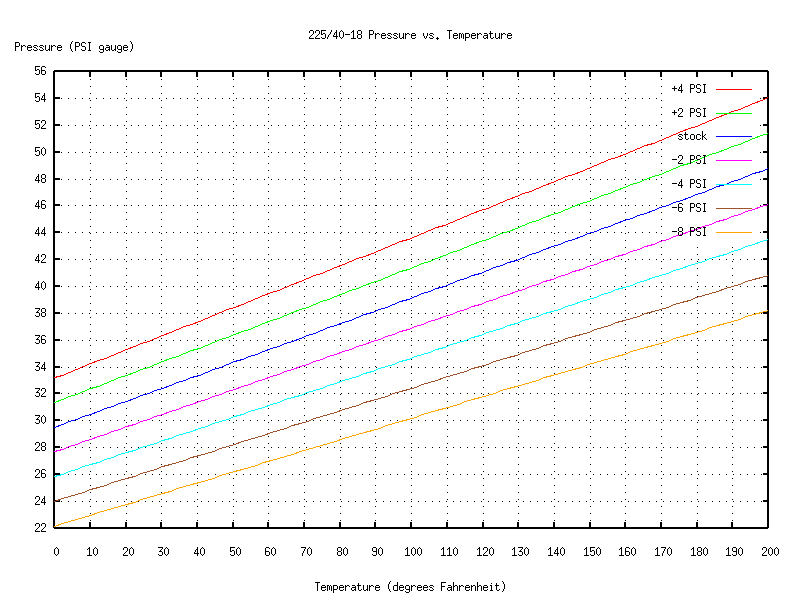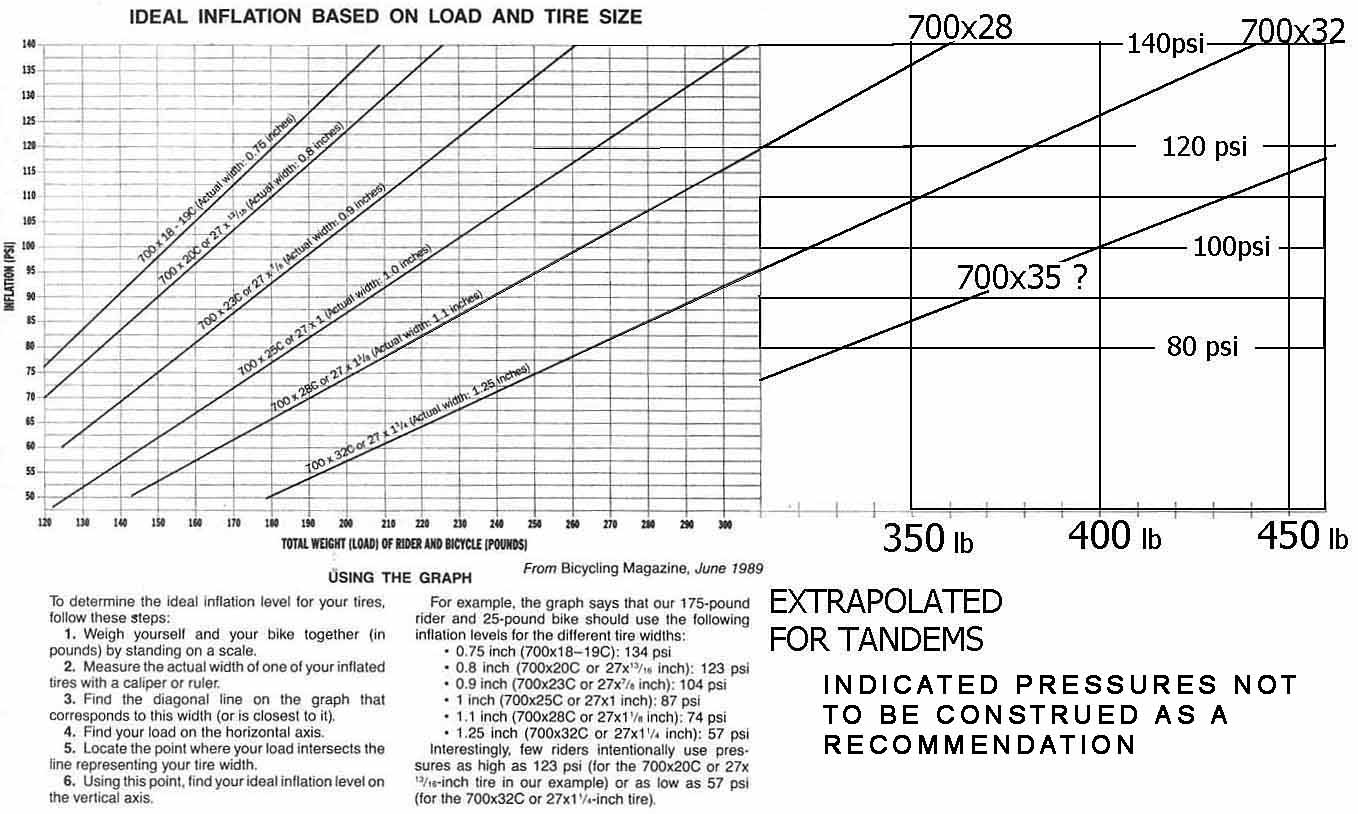squarebore
Well-Known Member
After listening to concerns by other forum members about tyre temperatures going up when running at lower than recommended pressures, I decided to do some testing. The methodology was:
Almost new K60s - 1000kms on each
1/4 tank fuel and 110kg rider (no luggage except empty topbox)
pressures set cold in shed at 33f and 42r
rode to start point and stopped and checked temps on tread area (in the valley), sidewall, road and ambient
used Fluke 566 laser temp sensor
rode a 5km circuit of straights and bends
recorded temps
reduced pressure by 2 psi front and rear
continued same process for 5 laps
I have the table and charts below but my conclusion is that down to 25f and 34r you will have no significant temperature issues with the tyres. When I have more time I will continue the test for lower pressures and a loaded bike.
(Edit and P.s. The hot pressures were about 5-7 psi above cold. That's why I reduced the pressure by 2psi each time and didn't worry about the actual pressure. 42psi cold was reading as 49psi hot)


Almost new K60s - 1000kms on each
1/4 tank fuel and 110kg rider (no luggage except empty topbox)
pressures set cold in shed at 33f and 42r
rode to start point and stopped and checked temps on tread area (in the valley), sidewall, road and ambient
used Fluke 566 laser temp sensor
rode a 5km circuit of straights and bends
recorded temps
reduced pressure by 2 psi front and rear
continued same process for 5 laps
I have the table and charts below but my conclusion is that down to 25f and 34r you will have no significant temperature issues with the tyres. When I have more time I will continue the test for lower pressures and a loaded bike.
(Edit and P.s. The hot pressures were about 5-7 psi above cold. That's why I reduced the pressure by 2psi each time and didn't worry about the actual pressure. 42psi cold was reading as 49psi hot)



